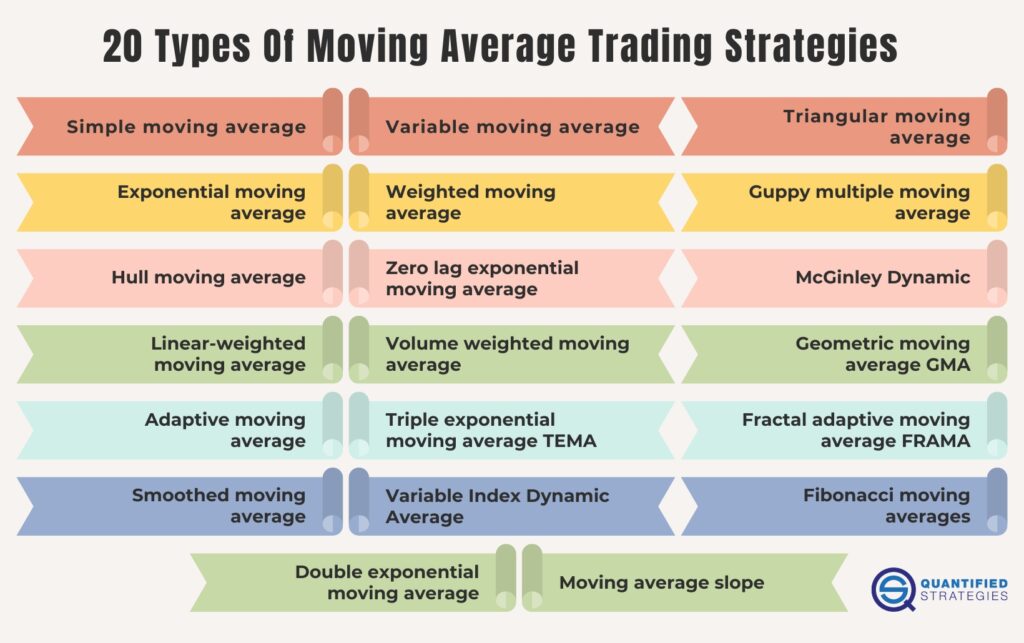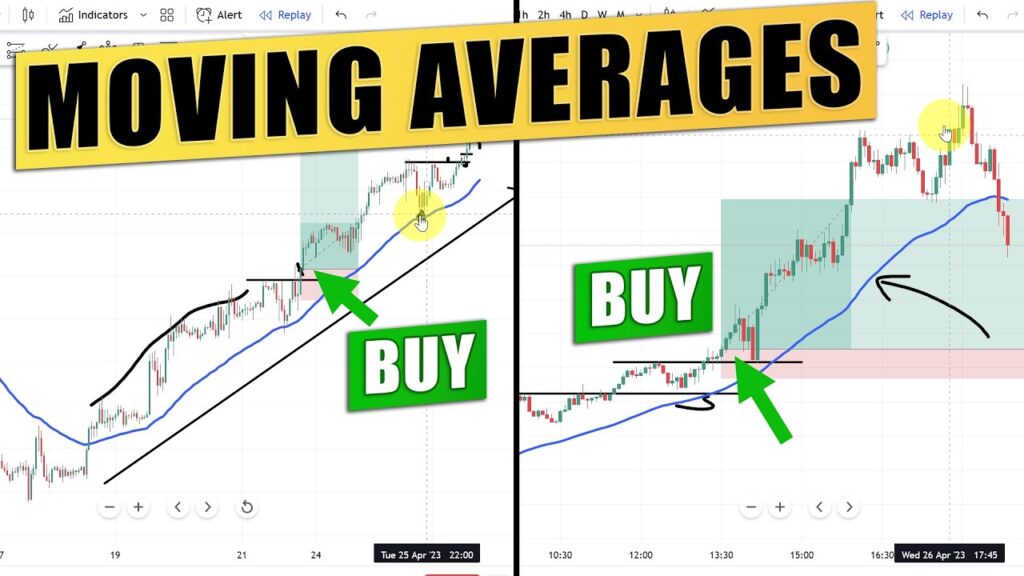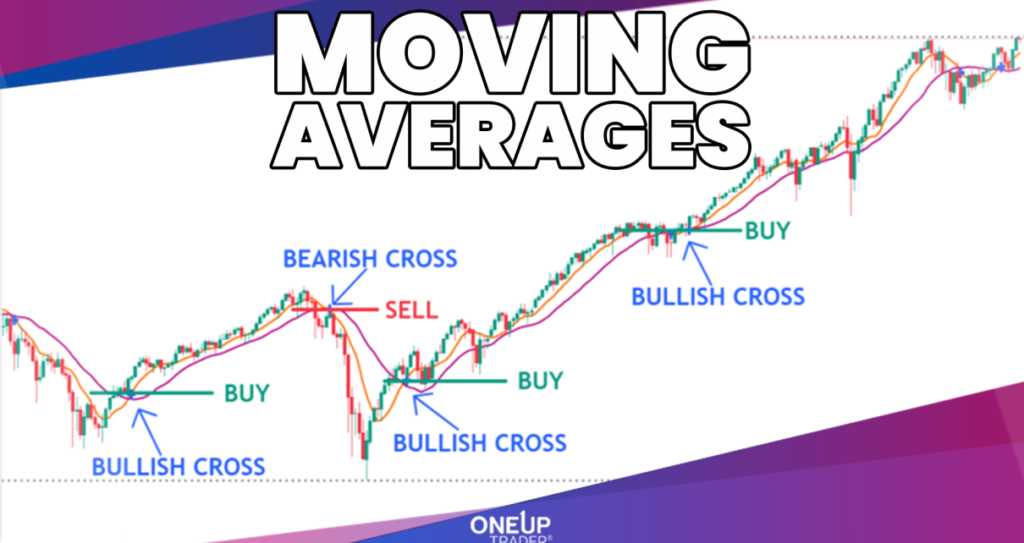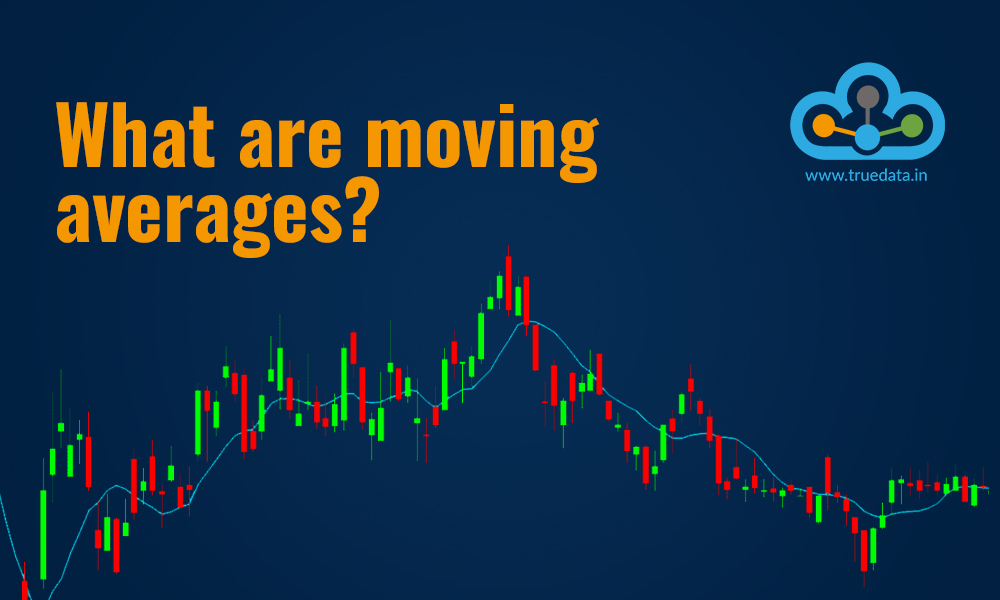Moving average (MA) is one of the most widely used technical indicators in the world of trading and investing. It is a simple and yet effective tool that helps traders and investors to identify trends and make informed decisions. In this comprehensive guide, we will explore the basics of moving average, its types, applications, and how it can be used to improve your trading and investment strategies.

What is Moving Average?
Moving average is a widely used mathematical formula that calculates the average price of an asset over a specified period of time. This period of time is known as the “lookback period.” The lookback period can range from a few days to several years, depending on the type of moving average and the type of asset being analyzed. Moving average is used to smooth out the fluctuations in the price of an asset, making it easier to identify trends and make informed decisions.
Types of Moving Averages
There are several types of moving averages, each with its own unique characteristics. The most commonly used moving averages are:
Simple Moving Average (SMA)
Simple Moving Average (SMA) is the most basic type of moving average. It is calculated by adding the closing price of an asset over a specified period of time and dividing by the number of periods in that time frame. For example, a 20-day simple moving average is calculated by adding the closing price of an asset over the last 20 days and dividing by 20.

Exponential Moving Average (EMA)
Exponential Moving Average (EMA) is a more sophisticated type of moving average. Unlike SMA, EMA gives more weight to recent prices, making it more responsive to changes in the price of an asset. EMA is calculated by applying a multiplier to the difference between the current closing price and the previous EMA value.
Weighted Moving Average (WMA)
Weighted Moving Average (WMA) is similar to EMA, but it gives more weight to recent prices based on the lookback period. For example, a 20-day WMA will give more weight to the most recent prices compared to a 20-day SMA.
Applications of Moving Average
Moving average has several practical applications in the world of trading and investing. Some of the most common applications include:
Trend Identification
One of the most important applications of moving average is trend identification. Moving average helps traders and investors to identify the direction of the trend, whether it is up, down, or sideways. This information can be used to make informed decisions about buying or selling an asset.
Support and Resistance
Moving average can also be used to identify key levels of support and resistance. For example, if an asset is trading above its moving average, it is considered to be in an uptrend. Conversely, if an asset is trading below its moving average, it is considered to be in a downtrend.

Crossover Signals
Moving average crossover signals are one of the most widely used trading strategies. This strategy involves comparing two moving averages with different lookback periods. If a short-term moving average crosses above a long-term moving average, it is considered a bullish signal. Conversely, if a short-term moving average crosses below a long-term moving average, it is considered a bearish signal.
How to Use Moving Average in Your Trading and Investment Strategies
Moving average is a versatile tool that can be used in a variety of trading and investment strategies. Some of the most common strategies include:
Trend Following
One of the most popular strategies is
trend following. This strategy involves using moving average to identify the direction of the trend and make decisions based on the trend. For example, if an asset is in an uptrend, a trend follower would buy the asset and hold it until the trend changes. Conversely, if an asset is in a downtrend, a trend follower would sell the asset and wait for the trend to change.
Crossover Trading
Another popular strategy is crossover trading. This strategy involves using moving average crossover signals to make buy and sell decisions. For example, if a short-term moving average crosses above a long-term moving average, a trader would buy the asset. Conversely, if a short-term moving average crosses below a long-term moving average, a trader would sell the asset.
Divergence Trading
Divergence trading is a strategy that involves comparing the price of an asset to its moving average. If the price of an asset is making higher highs while its moving average is making lower highs, it is considered a bearish divergence. Conversely, if the price of an asset is making lower lows while its moving average is making higher lows, it is considered a bullish divergence. This information can be used to make informed buy and sell decisions.
Conclusion
Moving average is a simple and yet effective tool that can help traders and investors to make informed decisions. By understanding the basics of moving average, its types, applications, and how it can be used in trading and investment strategies, you can use this tool to improve your results. Whether you are a beginner or an experienced trader or investor, moving average is a valuable tool that should be in your arsenal.


